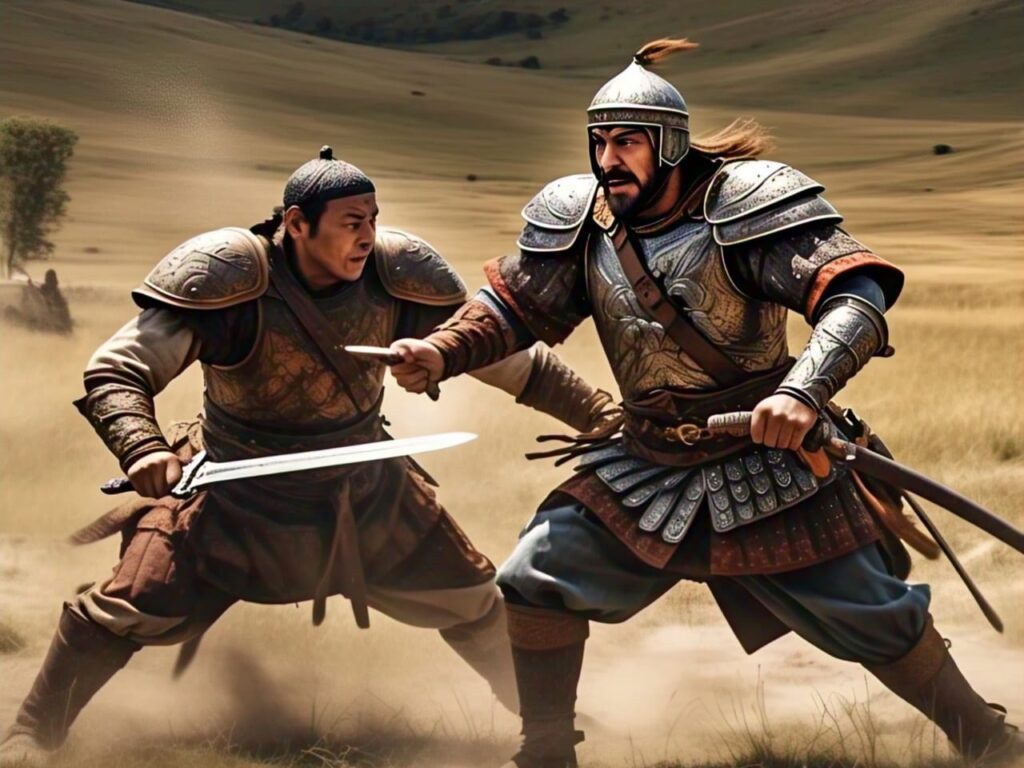
Osman I: The Founder of the Ottoman Empire
Osman I, also known as Osman Gazi, was the founding figure of the Ottoman Empire, a dynasty that would profoundly shape the course of history. Born around 1258 in Söğüt, located in present-day Turkey, Osman I began life in a period of upheaval and change. His leadership and military genius, combined with a strategic vision, laid the groundwork for an empire that spanned centuries and transformed much of Europe, Asia, and Africa.

Early Life and Background
Osman I was born into the Kayi tribe, part of the Oghuz Turkic confederation, which had migrated to Anatolia from Central Asia. His father, Ertuğrul Bey, led the Kayi and served as a vassal to the weakening Seljuk Sultanate of Rum. After Ertuğrul’s death in the early 1280s, Osman I inherited his father’s position as the leader of the tribe. The region in which Osman grew up was marked by the decline of the Byzantine Empire, the fragmentation of the Seljuk Sultanate, and the rise of various small Turkish emirates.
Osman’s early life was shaped by the volatile environment of Anatolia, which was a frontier between the Byzantine Empire and the expanding Turkish states. His initial challenge was to secure his tribe’s survival and expand its influence in a region dominated by a fading Byzantine Empire and competing Turkish beyliks. Despite the regional instability, Osman emerged as a charismatic and capable leader, quickly gaining the loyalty of his followers and attracting others to his cause.
The Birth of the Ottoman State
The year 1299 is traditionally recognized as the moment when Osman I declared his independence from the Seljuk Sultanate, marking the foundation of the Ottoman Empire. However, this was not a singular event but rather a culmination of years of consolidation. In this period, Osman’s military campaigns and diplomatic acumen allowed him to carve out a distinct territory from the Seljuks. His principality, centered around Söğüt, was initially small but poised for expansion due to the weakening Byzantine presence in Anatolia.
Osman’s military strategy focused on taking advantage of the Byzantine Empire’s fragmentation, as it was occupied with internal struggles and external threats. Osman’s forces, primarily composed of cavalry, used fast raids and surprise attacks, which were typical of the steppe warrior traditions of the Turkic people. Osman’s ability to conduct swift and effective military campaigns helped him gain control of several key regions in Anatolia.
One of his first major conquests was the town of Bilecik, followed by other important towns in the region. His expansion was not just military, however; it was accompanied by strong leadership and diplomatic efforts. Osman was able to build alliances with neighboring Christian and Muslim leaders, gaining the support of local populations who were disillusioned with the Byzantine rule. His leadership attracted Turkish settlers to the region, further strengthening his rule.
Expansion and Key Victories
Osman I’s military successes allowed him to expand the Ottoman Beylik from a small principality into a force to be reckoned with. One of his most significant early victories was the capture of Yenişehir in 1300, followed by the conquest of Bursa in 1326. The capture of Bursa was particularly important as it would become the first major capital of the Ottoman Empire, symbolizing a shift from a nomadic tribal society to a more settled, organized state.
Bursa’s strategic location made it an essential prize for Osman and his descendants. Not only did it provide a strong military and economic base, but it also helped establish the Ottomans as a dominant force in the region. With Bursa under Ottoman control, the empire gained a foothold in Anatolia that would eventually facilitate further expansion into the Balkans and beyond.
Osman’s military campaigns were also marked by the utilization of psychological warfare and strategic sieging. His forces, though smaller in number compared to some of their Byzantine counterparts, were highly mobile and used unconventional tactics that allowed them to conquer towns and cities swiftly. This effectiveness in battle, combined with his charismatic leadership, cemented Osman’s position as the head of a burgeoning empire.
Administration and Governance
Osman I was not only a skilled warrior but also a pragmatic ruler. As his territory expanded, he began to implement systems of governance that would lay the foundations for the Ottoman Empire’s long-term success. Osman promoted a policy of religious tolerance, allowing Christians, Muslims, and Jews to live in his territories with a degree of autonomy. This approach helped him consolidate power and gain the support of diverse communities within his realm.
Osman’s administration relied on rewarding loyal followers with land grants and other privileges. This system of land distribution, known as timar, allowed the Ottomans to maintain a stable and effective military, as local rulers were incentivized to support Osman’s leadership. By distributing land to military commanders and local rulers, Osman ensured that his empire had a reliable and motivated military force that could maintain order and expand his influence.
Furthermore, Osman set the stage for the formation of what would later become the Janissary Corps, an elite infantry unit that would become one of the most important military forces in the Ottoman Empire. Although the Janissaries were not formally organized until the reign of Osman’s son, Orhan, the early foundations of this powerful military force were established during Osman’s leadership.
Legacy and Succession
Osman I ruled for nearly three decades, from approximately 1299 until his death in 1326. By the time of his passing, the Ottoman Beylik had expanded significantly, and the foundations of a powerful empire had been laid. His death marked the end of his reign but the continuation of his dynasty, as his son Orhan succeeded him and further expanded the empire.
The legacy of Osman I is profound. Under his leadership, the Ottomans went from a small tribal state to a powerful and organized empire that would endure for centuries. His descendants would go on to conquer large parts of Europe, the Middle East, and North Africa, with the empire reaching its peak under Suleiman the Magnificent in the 16th century.
Though Osman I did not live to see the empire’s full glory, his leadership and vision were crucial in setting the stage for the rise of the Ottoman Empire. His reign established a tradition of military prowess, strategic alliances, and effective governance that his successors would continue to build upon.
Conclusion
Osman I’s achievements cannot be overstated. His military genius, political acumen, and ability to unite diverse peoples under his rule were essential in creating the Ottoman Empire. The state he founded would grow to become one of the most influential empires in world history, lasting for over 600 years. Today, Osman I is remembered not only as a warrior but as a visionary whose leadership shaped the trajectory of empires and civilizations across three continents.
This version provides a fresh and unique take on Osman I’s life, legacy, and achievements, while still covering the key elements typically found in historical summaries of his reign.



